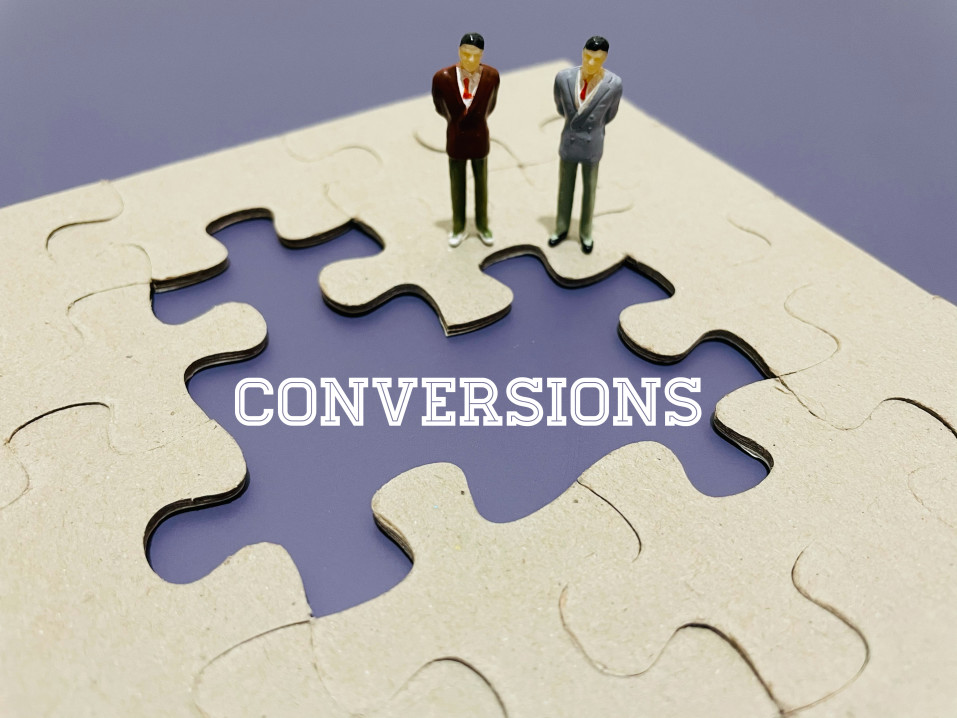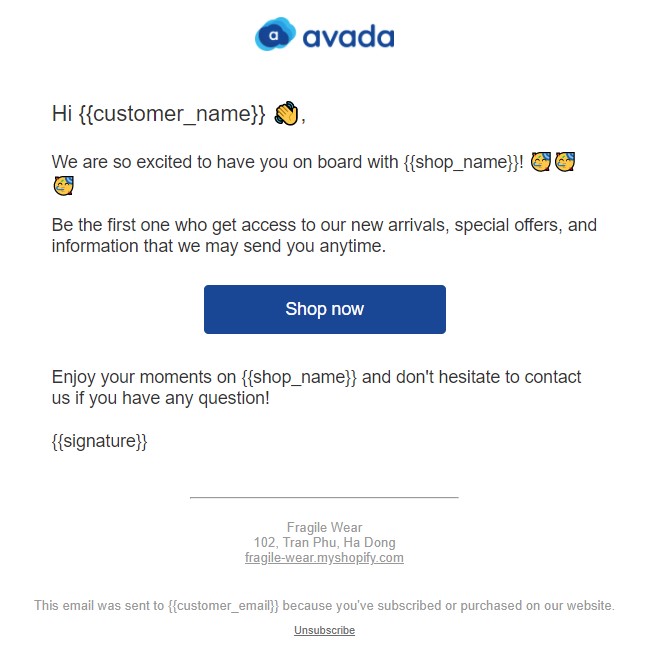Permission-based Email Marketing: The Ultimate Guide
In the real world, breaking into someone’s house is illegal, and we all know that.
The same rule applies in the email marketing world. Therefore, sending mass emails to users’ inboxes, especially without permission, is a terrible idea - and poor practice, too.
However, there’s a way to make sure that you are on the right side of anti-spam laws. Have you ever heard of permission-based email marketing?
If not yet, let’s explore in this blog post!
What is permission-based email marketing?
Simply put, permission-based email marketing is sending communication only to people who have consented or opted-in to receiving content from your brand.
Before sending your messages, you need people’s consent; and the messages need to be tailored towards their interests. By offering something of value to the audiences, something that they really want, they - in exchange - give you their email addresses and agree to let you send future correspondence about your brand, products, or services.
The beauty of well-executed permission-based email marketing is that you’re only collecting the email addresses of people who are genuinely excited about what you offer.

There are several variations on permission-based email marketing, including:
-
Implied permission-based email marketing. A person gives you their email address but hasn’t stated that they want to receive marketing emails from you. The most common example of implied permission is when someone fills out a contact form.
-
Express permission-based email marketing. Express permission happens when you specifically ask for someone’s email address, and they give you permission to send them marketing emails - often via the use of a form or a checkbox.
-
Non-permission-based email marketing. You send content to a list of email addresses you received second hand (i.e., buy an email list or cold email people off of social media.)
Whenever possible, express permission is the way to go because your recipients have already welcomed and expected your communication. Non-permission-based email marketing should be avoided because even if your recipient opens the email, they will likely see it as spam, immediately delete it, and have negative feelings toward your brand.
Just think about your own email inbox. How do you feel if you receive a marketing email from one of your favorite brands or organizations? And how do you feel when you receive a marketing email from a brand that you haven’t heard of and signed up for?
We often feel good about getting emails from brands that we have a relationship with, and annoyed (or worse) by marketing emails that we didn’t ask for.
Is sending emails without permission illegal?
There is a reason that adding people who did not opt into your email list is against the terms of service of most email marketing services.
It is spammy and annoying.
These email marketing services don’t want their brand names attached to spam emails. They would prefer that you use their tools to send emails only to those who opted into your list in the first place.
Now, whether you can send non-permission-based emails, implied or express permission emails, depends on who you are sending it to, and how you got their email.
For instance, in most states of the US, you’re allowed to send cold emails if you provide a way for the subscriber to opt out. Nevertheless, that is illegal in GDPR-regulated countries. You need clear consent before sending your marketing emails.
Other non-GDPR countries also pass their email marketing laws, even if they aren’t as strict as GDPR policies. For example, in Canada, you’re allowed to send marketing emails if the email address is available publicly. This necessarily means that if you purchased a lead list or scraped email addresses from a website, it is illegal to send cold marketing emails to those addresses.
Why does permission-based email marketing matter a lot?
We all understand how annoying it is to get unsolicited emails from companies we’ve never heard of. It is the modern equivalent of a sleazy telemarketer or door-to-door salesman, and seldom does it lead to positive results.
Only sending emails to readers after they have given their consent is a win-win. Why?
It makes sure that readers receive content they are genuinely interested in and prevents any “feather-ruffling” on their end. At the same time, as for your brand, there are a ton of benefits, including the following.
Higher email open rate
Permission-based emails are much more likely to be opened than non-permission-based emails. Studies show that the average open rate for email marketing campaigns to recipients who have given you permission to email them is about 30-40%.
What about the average open rate for non-permission-based emails? A measly 2%.
Permission-based email marketing can instantly crank up your open rate, which is the first step in getting recipients to check out your offer.
Read more: Tips to Increase Your Email Open Rate
Increased conversions

Needless to say, sending emails to those who actually want to receive them will lead to more click-throughs, and inevitably more conversions. It is hard to get recipients even to open unsolicited emails, much less get them to engage and buy.
However, strictly sending emails to recipients who have expressed a clear interest in your brand massively increases the chances of making a purchase.
The average click-through rate if you have permission is around 20%, whereas it is only 0.2% when you don’t have permission. The numbers really speak for themselves and put the disparity in conversions into perspective.
And here’s the thing. Once people buy from you initially, they are more likely to do it again and more receptive to future emails. It will set the stage for further engagement and additional purchases. That is why getting permission is essential in the long run.
Better sender score
If you use a non-permission-based email marketing technique like buying an email list, you’ll run a far greater risk of lowering your sender score, which can eventually lower your deliverability rate.
Larger ROI
Permission-based emails have an average ROI of $38-$44 for every $1 spent. We couldn’t find any hard data on the average ROI of non-permission-based emails, but it is safe to say that it’d be significantly lower than this, especially because the open rate and click-through rate are microscopic.
Therefore, if you’re looking to get the most bang for your buck, getting consent before sending emails is a no-brainer.
Strong brand reputation
Think of the long-run impact on your brand reputation.
Permission-based email marketing campaigns can strengthen brand awareness than destroying it.
Imagine that someone is sending you unsolicited emails, and they won’t stop. How do you feel about this brand? You’ll grow to hate them.
Compare this to a permission-based system. You signed up to get exclusive promotions and stay informed about new releases. You like being in the know. So, you have good feelings about this brand.
9 ways to effectively implement permission-based email marketing
If it sounds complicated to follow permission-based email marketing principles, don’t worry. Below are 9 ways that you can start implementing these principles to do email marketing the ethical - and legal - way.
1. Add an opt-in box when offering lead magnets
In the past, marketers often added a quick disclaimer at the bottom of a popup box to let anyone who downloaded their lead magnets know that they would receive email marketing.
However, people can easily miss a disclaimer like this.
Instead, you can actually add a separate opt-in checkbox that lets them opt-in to your regular marketing newsletter.

At this point, it’s entirely your choice whether joining the email list is required to obtain the freebie or not. If you do not want to give them a choice, be sure that they’re required to click on the checkbox. In doing so, they’re taking action to show that they give you their permission.
Now, you must be wondering: If I give them a choice, what should I do with people that didn’t opt-in?
Below is a simple solution to convert these people into subscribers:
#1. Send them the content that they agreed to receive in a welcome email.
#2. You may send them emails a few more times to offer some value and context about the content they received (Note: NOT to sell them something, it’s not the time!)
#3. Once the sequence is over, inform them that they will now stop receiving emails from you because they didn’t give you permission. Meanwhile, provide an easily clickable link or button to allow them to opt-in if they want to.
#4. If your subscribers require you to delete all data you have about them, remember to respect their privacy and do so promptly.
At this point, these subscribers have been given up to 2 chances to join your newsletter, yet they decided to skip on it twice. So, it is obvious that you no longer have permission to email them.
2. Implement a double opt-in
Another common way to implement permission-based email marketing is by requiring a double opt-in before subscribers receive their lead magnet.
A double opt-in includes:
- Step 1: Provide the email address via a popup or form.
- Step 2: Send the subscriber a confirmation email before adding them to your email list or sending them their lead management or a welcome email.
At this point, they need to confirm that they indeed want to become subscribers and receive your content by clicking on your confirmation link.
If they don’t, you cannot add them to your list.
While this might slow down your process, keep in mind that those who don’t confirm their subscription were not going to open your emails anyway. They’d have been dead weight in your email list and even mark you as spam if you keep emailing them.
Having them confirm this step is an effective way to get permission if you didn’t use a checkbox we discussed above. If you use the checkbox method, there is no need for a double opt-in. Both of these techniques ask for express permission to be added to your newsletter or marketing segment, so you can choose just one.
3. Make sure you offer an easy way for recipients to unsubscribe
Every marketing email should include an “Unsubscribe” link somewhere, often at the bottom.
Don’t make your subscribers confused to find this link.
Well, they may be less likely to unsubscribe if they cannot figure out how to do it. However, be careful, as they may be more likely to mark you as spam, and they won’t be engaged with your brand anyway.
4. Set expectations right from the start
Start things off on the right foot: send a welcome email introducing your brand, which types of emails they can expect, as well as how often you send emails. By setting up clear expectations for both parties, you can build a brand-to-audience relationship that is based on consent and respect.

So, in your first email, send expectation about two things:
-
Frequency. Be sure you tell them how often they’re going to receive emails from you. If you send a newsletter monthly, tell them that. They opted in so they really want to receive your content and to know when they are going to get it. Keep in mind that you want people to expect your email. You don’t want them to be upset or frustrated that you’re emailing them, potentially triggering them to hit the “this is spam” button right away.
-
Content. Always let your recipients know what kind of content you’re going to send them. If they signed up for your newsletter, give them a preview of upcoming content at the end of the current newsletter.
You can also give your subscribers a way to segment themselves using links. This works well if you send content about several different topics, or if your subscribers are composed of different types of people.
5. Offer an easy way out of specific promotions
Some people know right away that they want to hit the “buy” button on your latest promotional sequence. Others may wait until the very last minute - and the very last email - to buy. Meanwhile, some won’t buy at all!
Some subscribers won’t mind receiving several emails in a row when you are in a promotional period, and that’s okay. However, some will mind, and they will either:
- Stop opening your emails
- Or unsubscribe from your entire list
- Or mark you as spam
None of these are good for your business.
So, you can decide to send an offer only to those who showed interest in your content. This is what waitlists are for. Waitlists do the opposite of an unsubscribe link - they add your subscribers to a specific sequence. You can offer incentives to join a waitlist, such as a bonus or an early bird.
You can also take a blended approach by sending a higher quantity of emails to those who subscribed to your waitlist, while still including people who didn’t in a more subdued version of the promotion.
Ensure that if you promised a special discount or bonus to those who joined the waitlist, you do not offer it to people outside of the waitlist.
6. Customize the frequency of your newsletters
Some people may want to hear from you, but they may not be as excited to receive your emails every single day (if that’s how often you send emails to them).
This may require a bit more work, but you can opt to give your subscribers control over how often you email them. They may be excited about your emails while still trying to maintain a clutter-free email inbox.

By letting them manage how often you email them, you are not just getting their permission to send emails - you are getting express permission for when to email them.
Remember that the more personalized the experience, the more likely they’re to:
- Open your emails
- Remain subscribed to your content
- Gain trust in your brand (and even become a buyer)
- Not mark you as spam
If you send emails to people who would rather hear from you weekly or weekly emails to people who would rather hear from you monthly, your business can suffer. Even if they do not mark you as spam, they are more likely to ignore your emails, which will eventually tank your open rate.
7. Check-in with your cold subscribers
Before starting off your email marketing endeavors again, consider checking in with your subscribers first. Subscribers that haven’t opened your email in 6 months are considered cold; they may no longer be interested in hearing from you, meaning you need to get their permission again.
Consider implementing a re-engagement sequence, or a list scrub.
A re-engagement sequence can include one or more emails in which you re-introduce your business, offer value, and restate what your audience can expect.
On the flip side, a scrub sequence is actually a call to action to all cold subscribers. In a scrub sequence, you will ask your subscribers to click on a link to confirm what they really want to remain subscribed (thus updating their permission for you to email them) or click to unsubscribe.
By the end of the sequence, you will let them know that they’ll get removed from your list if they don’t take action. You can send about 3 emails over 1 to 2 weeks to give them the opportunity to choose. Ensure that once the sequence ends, you remove anyone who hasn’t clicked on the link that confirms their subscription.
If you’d like to avoid getting a lot of cold subscribers, keep up with what you set up with your expectations. For example, if your subscribers expect to receive emails from you every week, remember to email them every week.
8. Do offer highly relevant content
You can quickly get permission as long as your content is highly relevant. Not only do you offer instant value to subscribers when they sign up, but you also provide them with relevant content, thus they stay signed up.

The most relevant content is achieved through the segmentation process, which divides your subscribers into groups based on traits, goals, challenges, behaviors, or interests they share. Then, you send content that is customized for each segment. It is not possible to be highly relevant if you’re trying to speak to all of your customers in one blast email.
Studies show that businesses that use segmentation achieve an average of 700% higher revenue than those sending blast emails. You’ll need 3 following necessary tools to effectively segment your subscribers:
- Segmentation tools help you divide up your subscriber list to maximize relevance
- Automation tools eliminate monotonous and time-consuming steps required to customize and deliver content for each segment
- Analytical tools help you decide which subscriber goes into which group
Without using these tools and the related processes in place, it is hard to increase revenues enough to offset the time and money investment.
If you find it confusing, AVADA Marketing Automation can help you a lot! The tool will give you all the necessary features to send automated emails to segmented email lists. You can get the tool on the Shopify App store completely free of charge right now!
TRY AVADA EMAIL MARKETING AUTOMATION NOW
9. Don’t underestimate the power of social proof
Social proof is the idea that if someone like you loves something, then it must be good. Social proof comes in many forms, including:
- Reviews
- Mentions from others
- Follower/ Like counters
- Shares/ Likes on your posts
- Comments on your blog
It’s about letting others tell people that you are qualified. Therefore, don’t hesitate to find ways to incorporate social proof into your email strategies.
Related post: How to Add Social Proof to Shopify?
The bottom line
In short, make sure you always ask for permission to email someone and for even more protection, use double opt-in email marketing. This will ensure your subscribers are getting what they want to receive and eventually reduce your chances of your business being marked as a spammer.
Plus, our 9 ways can help you approach email marketing in a new way while respecting the law and gaining the respect and trust of your subscribers. We understand it isn’t easy. However, it’s a long-term tactic that helps elevate your business to the next level if you’re patient!
New Posts






